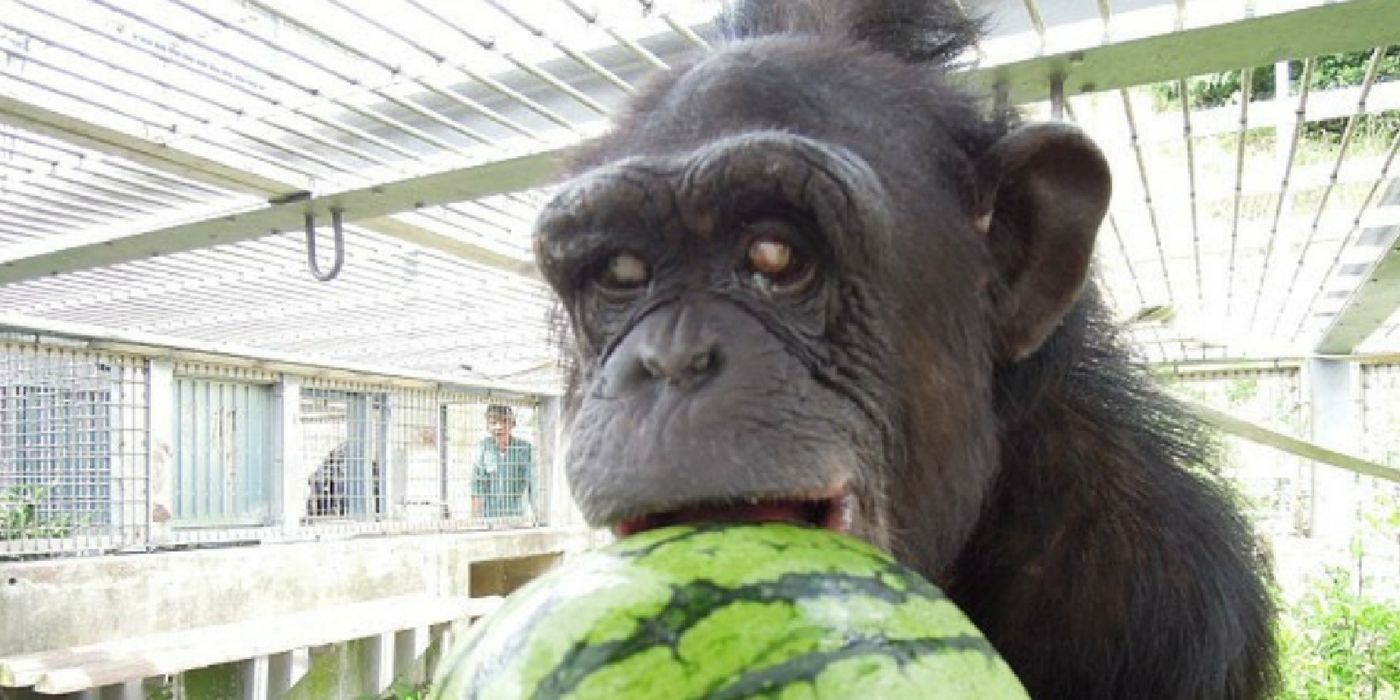Meet the 24-Year-Old Chimp with Down Syndrome
Japanese scientists have confirmed the diagnosis of Down syndrome in a 24-year-old female chimp named Kanako. This marks only the second documented occurrence of this condition in a chimpanzee.
Kanako was born in captivity at the Kumamoto Sanctuary and developed some abnormal characteristics that set her apart from other chimps. Her eyes, for example, were crossed and at the age of one, she developed cataracts. She became blind at the age of seven. In addition, she also had some heart abnormalities and underdeveloped teeth.
Recent exams later revealed that Kanako has a third copy of chromosome 22, otherwise known as trisomy 22.
These characteristics all mirror Down syndrome in humans, which is genetic condition caused by the presence of all or part of an extra chromosome 21. A full extra copy of chromosome 21 is often referred to as trisomy 21.
Patients with Down syndrome exhibit some craniofacial dysmorphology, such as overall reduced skull size, flat head, epicanthal folds, flat nasal bridge, and open mouth. In addition, one of the most affected organs in Down syndrome is the brain. Down syndrome patients present with an overall smaller brain size, specifically smaller cerebellum and hippocampus. This can result in a range of cognitive impairments, such as learning and memory deficits. In fact, trisomy 21 is the most frequent genetic cause of mental retardation.
The rest of the body can also be perturbed due to the dosage imbalance of an extra 21 chromosome, including clubbed digits, curved pinkie, wide 1-2 toe gap, and shortened stature. Down syndrome patients also show an increased incidence of congenital heart disease and Hirschsprung’s disease.
Because the confirmation of trisomy 22 was only recently confirmed for Kanako, it’s not entirely clear how this condition has affected her development. For example, while mental retardation is present in many Down syndrome patients, Kanako’s caretakers say there’s little evidence of this trait in the chimp.
At 24-years-old, Kanako’s is currently the oldest chimp diagnosed with trisomy 22. The only other instance of trisomy 22 was documented in 1969, but the chimp only lived for less than two years.
Scientists aren’t too sure how common Down syndrome is in chimps. However, they suspect the rate isn’t too far off from humans. "It is difficult to estimate the probability of a rare event using a small population, but given that around 500 chimpanzees have been born in captivity in Japan, the probability of this autosomal trisomy in chimpanzees may be comparable to that of trisomy 21 in humans, which occurs in up to 1 in 600 births," said Satoshi Hirata, the lead investigator for Kanako’s case study.
Additional sources: Springer









